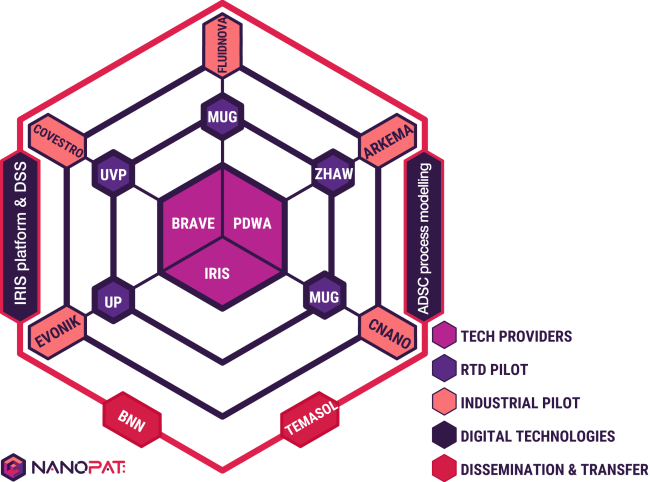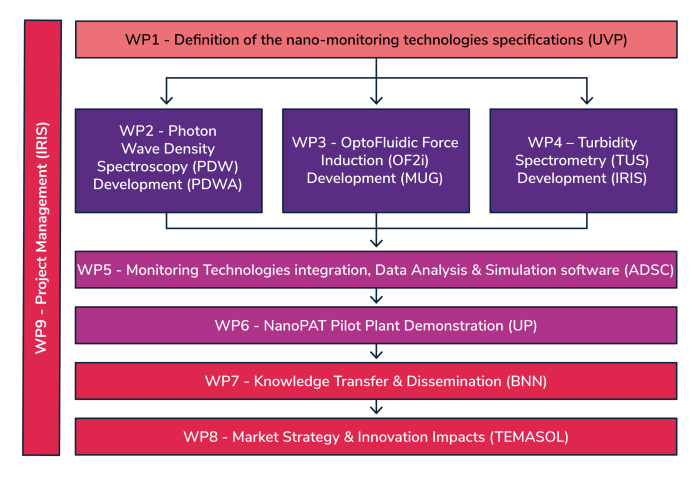Work plan
The project is divided into 9 work packages covering the scientific and technical aspects of the project, exploitation and dissemination of results, knowledge transfer, market strategy and project management. Each work package is managed by a work package leader who is responsible for the timely delivery of deliverables to the Coordinator, who in turn represents the Consortium to the Commission.

